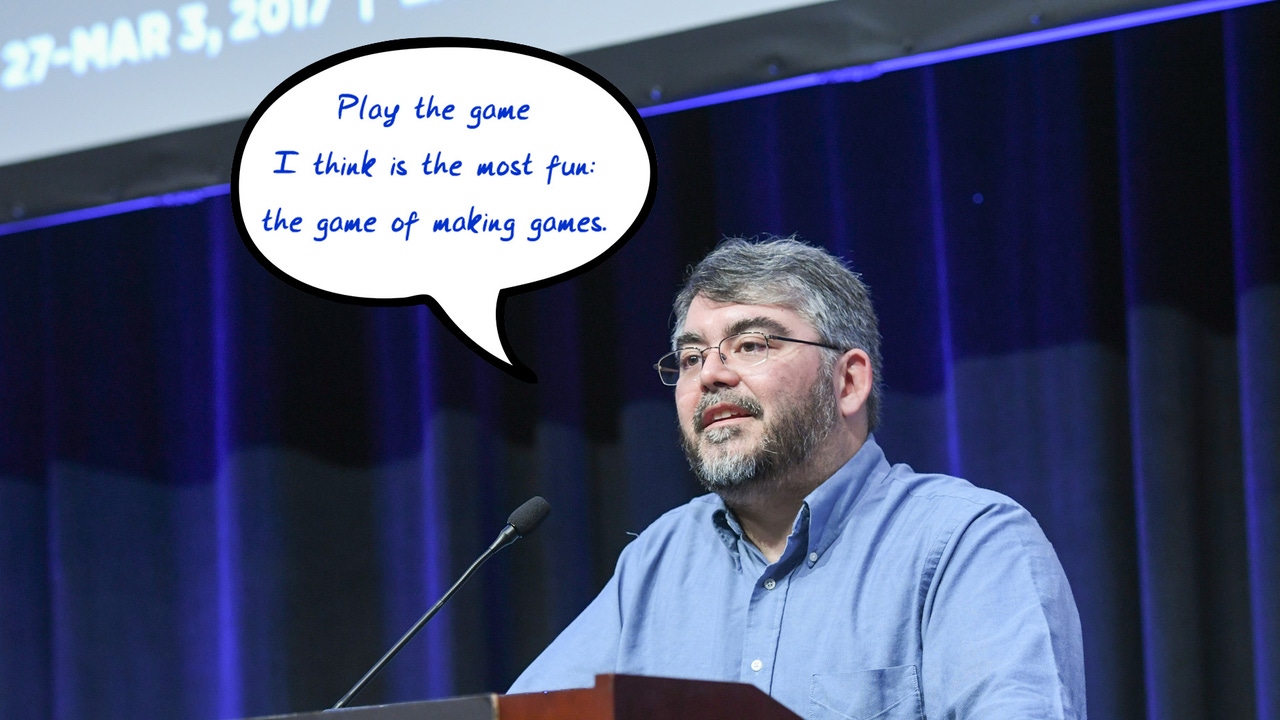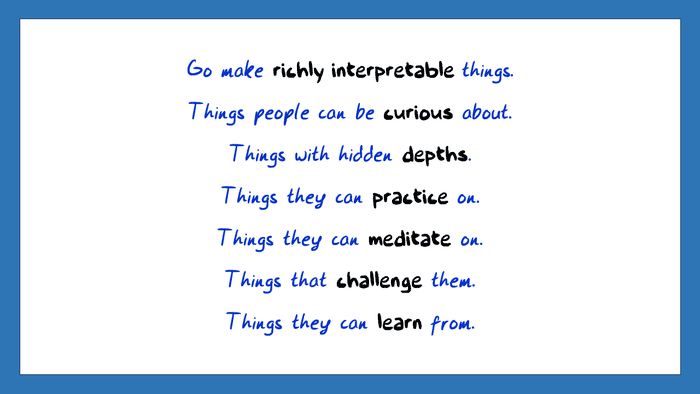Trending
Opinion: How will Project 2025 impact game developers?
The Heritage Foundation's manifesto for the possible next administration could do great harm to many, including large portions of the game development community.

Read More from GDC 2024 | Keep up with the latest game industry event coverage from GDC 2024, including news, talks, interviews, and more from the Game Developer team.
Veteran game designer Raph Koster thinks there's a lot of room to explore what 'fun' is in game design.

Raph Koster never thought his "theory of fun" would go as far as it did.
It began as a 2003 Game Developers Conference Austin keynote, then evolved into a book titled "A Theory of Fun for Game Design." That book now lives in the syllabi of game design courses across the globe. It's been cited in academic textbooks about game design. It was the foundation for the trend of "gamification" and was part of the underlying principles behind Google Genie, a tool that builds sidescrolling levels out of 2D art.
The book has become such a valuable resource that as Koster noted in his 2024 GDC presentation, there haven't been many attempts to follow it up. He begged the audience to write their own books, because his was "literally half cartoons."
"That's a lot of burden to put on a fairly slender little book!" He protested.
Koster was on stage this year to offer a 20-year update on "A Theory of Fun," and break down what ideas didn't hold up, and what new ideas he would put into the book if he were writing it today. The (wonderfully dense) talk dove into how developers can best break down game mechanics to understand what kind of fun they offer, who they are fun for, and what kinds of fun may yet be invented.
But this talk wasn't just a set of patch notes for academics and designers. Woven through his words were meditations on why play is important for human beings, reflections on the fluid meaning of digital mediums, and ultimately a call to action for the world of game development: to get back to "the game of making games."
All nonfiction books struggle with the flow of history. Koster was eager to address developments from the last 20 years.
The first is that the psychological studies that underpinned his writing have been undermined under recent scrutiny. He referred to the commonly-referenced example of the Marshmallow Experiment as one example. What was once a study of children's self-control has turned out to be a better predicator of class status or how recently the child had eaten, and not generally an indicator of how well they'll do in life.
On the flip side of that coin, there have been more advancements in how neurotransmitters like dopamine relate to feelings of pleasure and fun. For developers who rely on psychological tools to create game features (like those documented by UX researcher Celia Hodent), there's a lot more data out there now
Those changes helped Koster alter his distinction between "delight" and "fun." His definition of "fun" was deeply tied to the idea of learning, and his definition of "delight" was tied to the idea of recognizing patterns. Now he says those two are more "gooey" ideas that overlap and "don't fall into nice boxes.
He referenced recent research that indicates the feeling of "delight" comes from the generation of Serotonin, and it's about being rewarded with a sense of completion. Dopamine meanwhile is driven by "the expectation of a reward from curiosity."

Image via Raph Koster.
With more tools to think about what "fun" has meant, Koster said he wasn't excited about how "narrow" his original thinking had been. He recounted giving a talk about trying to make an art game about birds, and that it felt "so math-y."
"Are games teaching me to make everything into math? Because I'd rather live in a world full of color and vibrancy than in an eight-bit palette."
He didn't seem keen to throw out his old tools entirely for studying fun, but instead more relaxed about how designers can understand why systems that don't fit neatly into his original "theory of fun" bring joy to players.
If "learning" is at the heart of fun, why do people still replay games over and over again when there's so little learning left to do?
How did game developers not anticipate the rise of "speedrunning," even though learning how to play any game at its most optimal pace is an emergent possibility of game design?
Does leaning too far into this framework lead to games becoming too dense for new audiences to appeal to the learning needs of experienced players? (A theory he credited to Spryfox game designer Dan Cook).
Koster's ever-evolving questions about the "hows" and "whys" of fun seem to made him hyper-reflective about his legacy and the field of game design. It painted a bigger picture about his contributions to the field—and how other developers may build on his work.
There was something of a depressing tint to some of Koster's words. For all the joy he knows he spread with A Theory of Fun, he recognized how bad actors had warped his ideas for capitalistic gain.
He wrote his cartoon-filled book in an era where the game industry had so few formalized texts on the art of game design, at the dawn of a period where designers like Brenda Romero and Jason Rohrer would began to experiment with the idea that the mechanics of a game—absent of affiliated narrative or art direction—could convey meaning on their own.

Image via Raph Koster.
He also mused that after he dies, he'll be more remembered for his book than he will be for the games he's made.
"You're all missing the Tetris talk—that's probably the only game people will remember years from now," he mused, referencing a presentation by Vedran Klanac, Alexey Pajitnov, and Kate Edwards about the unveiling of an unpublished Tetris sequel a few rooms away. "But that's okay. It still gives me a target to shoot for—a vast, lofty artistic ambition: how do I make something that lasts forever?"
He's already seen what happens when a book "lasts" for two decades. Developers have leaned on its ideas to broaden what's possible in game design—but also in some ways, to constrict themselves with fixed ideas of what "fun" is (see his earlier grumbling about making a bird game that's 'too math-y').
If A Theory of Fun is going to last forever, it needs to be more than a fixed set of boxes and grids forever filled by people pushing product. It needs to be ever-evolving clay that's fun to use and experiment with. He urged developers to cast their gaze far out into the world, looking to real-world systems as niche as the workings of a microphone or the innards of a cow.
"Playing is sticking your hands into the gears of something to see how it works," he said. That applies to the game of "fun" as well. If developers keep thinking about the concept that way, and not as a "solved" problem, then they can get back to what might be the most important game Koster discussed.
"It's important that we look and recognize that this is a collaborative game we play," he said as he closed his talk. "It's the game of making games. And enriching everybody's world to help them all learn..."
He paused for one last dramatic beat. "Whatever they want."
Game Developer and Game Developers Conference are sibling organizations under Informa Tech.
You May Also Like